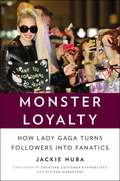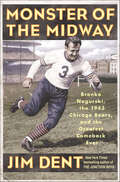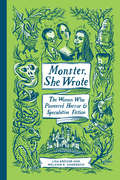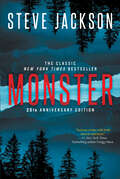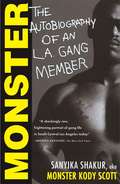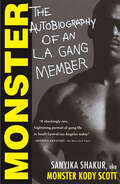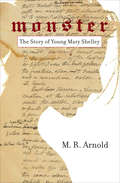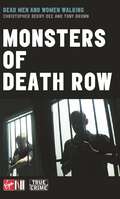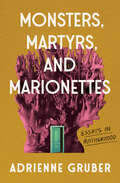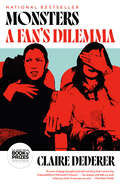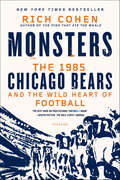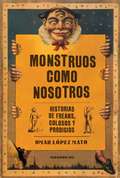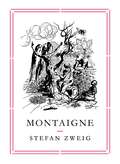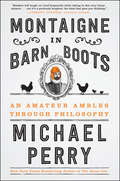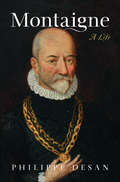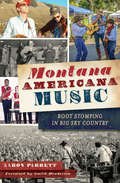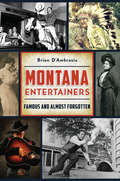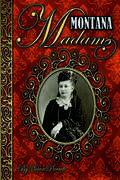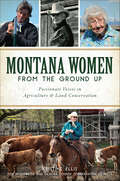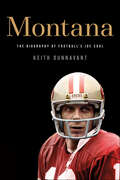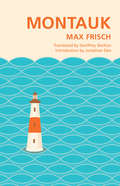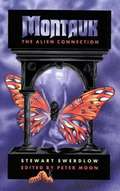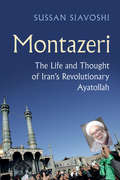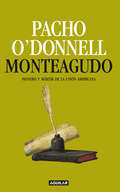- Table View
- List View
Monster Loyalty
by Jackie Huba"WE IDENTIFY WITH EACH OTHER. I SEE MYSELF IN MY FANS AND MY FANS SEE THEMSELVES IN ME. I CALL THEM LITTLE MONSTERS BECAUSE THEY ARE MY INSPIRATION. ” -LADY GAGA Famous for her avant-garde outfits, over-the-top performances, and addictive dance beats, Lady Gaga is one of the most successful pop musicians of all time. But behind her showmanship lies another achievement: her wildly successful strategy for attracting and keeping insanely loyal fans. She’s one of the most popular social media voices in the world with more than 33 million Twitter followers and 55 million Facebook fans. And she got there by methodically building a grassroots base of what she calls her "Little Monsters”-passionate fans who look to her not just for music but also for joy, inspiration, and a sense of community. In Monster Loyalty marketing expert Jackie Huba explores Gaga’s biography and fan philosophy and isolates the seven lessons any business can learn from her. For instance... Focus on your One Percenters: Lady Gaga is investing today in the audience she hopes to have twenty-five years from now. She spends most of her efforts on just 1 percent of her base, the highly engaged superfans who spread her message. Lead with values: Gaga stands out not just for her music but also for her message that it’s okay to be yourself and to love others for who they are. When you connect with customers beyond just providing a product or service, you create a lasting bond. Give them something to talk about: Whether she’s wearing a meat dress or delivering jaw-dropping performances, Lady Gaga knows what will get people talking. Making your business word-of-mouth-worthy cuts down on advertising costs and spreads buzz faster than anything else. Love her or hate her, you can’t ignore Lady Gaga. And while not all businesses want to stand out the way she does, any business can win big by creating monster loyalty. .
Monster of the Midway: Bronko Nagurski, the 1943 Chicago Bears, and the Greatest Comeback Ever
by Jim DentJim Dent's Monster of the Midway is the story of football's fiercest competitor, the legendary Bronko Nagurski. From his discovery in the middle of a Minnesota field to his 1943 comeback season at Wrigley, from the University of Minnesota to the Hall of Fame, Bronko Nagurksi's life is a story of grit, hard work, passion, and, above all, an unstoppable drive to win.Monster of the Midway recounts Nagurski's unparalleled triumphs during the 1930s and '40s, when the Chicago Bears were the kings of professional football. From 1930, the Bronk's first year, through 1943, his last, the Bears won five NFL titles and played in four other NFL Championship Games. Focusing on Nagurski's 1943 comeback season, and how he miraculously led the Bears to their fourth NFL championship against the backdrop of World War II era Chicago, Jim Dent uncovers the riveting drama of Nagurski's playing days. His efforts were the stuff of legend, and his success in 1943 accomplished in spite of a battered frame, worn-out knees, multiple cracked ribs, and a broken bone in his lower back. While chronicling the drama of the '43 championship chase, Dent also tells of both the Bears' colorful early years and Bronko's improbable rise to fame from the backwoods of northern Minnesota. Woven into the narrative are the sights and smells and sounds of one of the most romantic, flavorful eras of the twentieth century. And laced through it all are stories of legend: Bronko rubbing shoulders with colorful characters like George Halas, Red Grange, Sid Luckman, and Sammy Baugh; Bronko running into (and breaking) the brick wall at Wrigley Field; Bronko winning All-American spots for two positions; Bronko knocking scores of opponents unconscious; and Bronko reaching the heights of football glory and, with rare grace, turning his back on the game after winning his last championship.Rich in unforgettable stories and scenes, this is Jim Dent's account of Bronko Nagurski-arguably the greatest football player who ever lived-and his teammates, the roughest, toughest, rowdiest group of players ever to don leather helmets, and the original Monsters of the Midway.
Monster, She Wrote: The Women Who Pioneered Horror and Speculative Fiction
by Melanie R. Anderson Lisa KrögerMeet the women writers who defied convention to craft some of literature’s strangest tales, from Frankenstein to The Haunting of Hill House and beyond. Frankenstein was just the beginning: horror stories and other weird fiction wouldn’t exist without the women who created it. From Gothic ghost stories to psychological horror to science fiction, women have been primary architects of speculative literature of all sorts. And their own life stories are as intriguing as their fiction. Everyone knows about Mary Shelley, creator of Frankenstein, who was rumored to keep her late husband’s heart in her desk drawer. But have you heard of Margaret “Mad Madge” Cavendish, who wrote a science-fiction epic 150 years earlier (and liked to wear topless gowns to the theater)? If you know the astounding work of Shirley Jackson, whose novel The Haunting of Hill House was reinvented as a Netflix series, then try the psychological hauntings of Violet Paget, who was openly involved in long-term romantic relationships with women in the Victorian era. You’ll meet celebrated icons (Ann Radcliffe, V. C. Andrews), forgotten wordsmiths (Eli Colter, Ruby Jean Jensen), and today’s vanguard (Helen Oyeyemi). Curated reading lists point you to their most spine-chilling tales.Part biography, part reader’s guide, the engaging write-ups and detailed reading lists will introduce you to more than a hundred authors and over two hundred of their mysterious and spooky novels, novellas, and stories.
Monster: Monsters Of Advanced Fighting Fantasy
by Steve JacksonAn account of serial killer Tom Luther that&’s &“one of the best books short of the famous Ann Rule works&” from the New York Times bestselling author (True Crime Book Reviews). On a snowy winter evening in 1982, twenty-one-year-old Mary Brown accepted a ride from a handsome stranger in the resort town of Breckenridge, Colorado. The trip ended with her brutally beaten and raped. Mary survived, but her predator&’s violence had only just begun. After ten years in prison, Tom Luther was released a far more vicious criminal. Soon, from the Rockies to West Virginia, like Ted Bundy, Luther enticed a chain of women into his murderous trap. In this gripping new edition of a true crime masterpiece, acclaimed author Steve Jackson recounts the intriguing pursuit and long-awaited conviction of a charismatic, monstrous psychopath, one who remains a suspect in three other crimes—and has never given up hope of escape.Includes sixteen pages of dramatic photosPraise for Steve Jackson &“He writes with both muscle and heart.&” —Gregg Olsen, #1 New York Times bestselling author of If You Tell &“A born storyteller. He makes you sweat . . . and turn the page.&” —Ron Franscell, national bestselling author of Alice & Gerald: A Homicidal Love Story
Monster: The Autobiography of an L.A. Gang Member
by Sanyika ShakurI have lived in South Central Los Angeles all my life. I grew up on Florence and Normandie. That is part of my territory. I was recruited into the Crips at the ripe old age of eleven. Today I am twenty-nine years old. I am a gang expert-period. There are no other gang experts except participants. Our lives, mores, customs, and philosophies remain as mysterious and untouched as those of any "uncivilized" tribe in Afrika. I have come full circle in my twenty-nine years on this planet, sixteen of those with the Crips. I have pushed people violently out of this existence and have fathered three children. I have felt completely free and have sat in total solitary confinement in San Quentin state prison. I have shot numerous people and have been shot seven times myself. I have been in gunfights in South Central and knife fights in Folsom state prison. Today, I languish at the bottom of one of the strictest maximum-security state prisons in this country. I propose to take my reader through the life and times of my own chilling involvement as a gang member with the Crips. I propose to open my mind as wide as possible to allow my readers the first ever glimpse at South Central from my side of the gun, street, fence, and wall. From my initial attraction and recruitment to my first shooting and my rise to Ghetto Star (ghetto celebrity) status, right up to the South Central rebellion and the truce between the warring factions-the Crips and Bloods. Although no longer aligned with gang or criminal activity, I still draw a great deal of support from this quarter. Come with me then, if you will, down a side street lined with stolen cars and youngsters armed with shotguns and .38 revolvers, lying in wait for the enemy, all members of a small gang. Then return with me five years later as the street is lined with luxury cars, dope dealers, and troops with AK-47 assault weapons, the gang now an army.
Monster: The Autobiography of an L.A. Gang Member
by Sanyika ShakurThe classic memoir of life as a Crip, written in solitary confinement: “A shockingly raw, frightening portrait of gang life in South Central Los Angeles.” —Michiko Kakutani, The New York TimesAfter pumping eight blasts from a sawed-off shotgun at a group of rival gang members, twelve-year-old Kody Scott was initiated into the L.A. gang the Crips. He quickly matured into one of the most formidable Crip combat soldiers, earning the name “Monster” for committing acts of brutal violence that repulsed even his fellow gang members.When the inevitable jail term confined him to a maximum-security cell, a complete political and personal transformation followed: from Monster to Sanyika Shakur, black nationalist, member of the New Afrikan Independence Movement, and crusader against the causes of gangsterism. In a work that has been compared to The Autobiography of Malcolm X and Eldridge Cleaver’s Soul on Ice, Shakur makes palpable the despair and decay of America’s inner cities and gives eloquent voice to one aspect of the black ghetto experience.
Monster: The Story of a Young Mary Shelley
by M. R. ArnoldA fictionalized autobiography of the woman who wrote Frankenstein. Two centuries ago, a twenty-year-old woman invented science fiction. Her father gave her a better education than any woman of the age could hope for—and made her the victim of ongoing incest. At fifteen, she became involved with one of the greatest poets in England and made love to him on her mother&’s grave. When she was sixteen, she escaped from home by running away for a six-week walking tour of Europe, and shared Percy Bysshe Shelley with her sister. And her mentor, Lord Byron, challenged her to prove she was as good a writer as the best poet-philosophers of the Enlightenment. Both men admired her mind, and both wanted more. She would publish a book that changed the world—and this historical novel imagines her inner life as a woman far ahead of her time.
Monsters Of Death Row
by Christopher Berry-Dee Anthony Gordon BrownFrom the cells of Death Row come the chilling, true-life accounts of the most heinous, cruel and depraved killers of modern times. Meet grisly killers such as Bill Joe Benefiel, the 'Superglue Monster', who glued his victims eyes and noses shut, causing them to suffocate. Or Willie Crain, the deviant fisherman, who put his victim into a lobster pot, where it was eaten by sea creatures.Many prisoners on ' the Row' have carried out serial murder, mass murder, spree killing and the desmemberment of bodies - both dead and alive. In these pages are to be found friends who have stabbed, hacked and ever filleted their victims. So meet the 'Dead Men and Women Walking' from the legion of the damned in the most terrifying true crime read ever.
Monsters, Martyrs, and Marionettes: Essays on Motherhood (Essais Series #16)
by Adrienne GruberMonsters, Martyrs, and Marionettes is a revelatory collection of personal essays that subverts the stereotypes and transcends the platitudes of family life to examine motherhood with blistering insight.Documenting the birth and early life of her three daughters, Adrienne Gruber shares what it really means to use one’s body to bring another life into the world and the lasting ramifications of that act on both parent and child. Each piece peers into the seemingly mundane to show us the mortal and emotional consequences of maternal bonds, placing experiences of “being a mom” within broader contexts—historical, literary, biological, and psychological—to speak to the ugly realities of parenthood often omitted from mainstream conversations.Ultimately, this deeply moving, graceful collection forces us to consider how close we are to death, even in the most average of moments, and how beauty is a necessary celebration amidst the chaos of being alive.
Monsters: A Fan's Dilemma
by Claire DedererA NEW YORK TIMES NOTABLE BOOK • NATIONAL BESTSELLER • A timely, passionate, provocative, blisteringly smart interrogation of how we make and experience art in the age of cancel culture, and of the link between genius and monstrosity. Can we love the work of controversial classic and contemporary artists but dislike the artist?"A lively, personal exploration of how one might think about the art of those who do bad things" —Vanity Fair • "[Dederer] breaks new ground, making a complex cultural conversation feel brand new." —Ada Calhoun, author of Also a Poet From the author of the New York Times best seller Poser and the acclaimed memoir Love and Trouble, Monsters is &“part memoir, part treatise, and all treat&” (The New York Times). This unflinching, deeply personal book expands on Claire Dederer&’s instantly viral Paris Review essay, "What Do We Do with the Art of Monstrous Men?" Can we love the work of artists such as Hemingway, Sylvia Plath, Miles Davis, Polanski, or Picasso? Should we? Dederer explores the audience's relationship with artists from Michael Jackson to Virginia Woolf, asking: How do we balance our undeniable sense of moral outrage with our equally undeniable love of the work? Is male monstrosity the same as female monstrosity? And if an artist is also a mother, does one identity inexorably, and fatally, interrupt the other? In a more troubling vein, she wonders if an artist needs to be a monster in order to create something great. Does genius deserve special dispensation? Does art have a mandate to depict the darker elements of the psyche? And what happens if the artist stares too long into the abyss? Highly topical, morally wise, honest to the core, Monsters is certain to incite a conversation about whether and how we can separate artists from their art.&“Monsters leaves us with Dederer&’s passionate commitment to the artists whose work most matters to her, and a framework to address these questions about the artists who matter most to us." —The Washington PostA Best Book of the Year: The New York Times, NPR, The Washington Post, The New Yorker, Vulture, Elle, Esquire, Kirkus
Monsters: The 1985 Chicago Bears and the Wild Heart of Football
by Rich CohenMonsters: The 1985 Chicago Bears and the Wild Heart of Football is the New York Times bestselling gripping account of a once-in-a-lifetime team and their lone Super Bowl season. For Rich Cohen and millions of other fans, the 1985 Chicago Bears were more than a football team: they were the greatest football team ever—a gang of colorful nuts, dancing and pounding their way to victory. They won a Super Bowl and saved a city. It was not just that the Monsters of the Midway won, but how they did it. On offense, there was high-stepping running back Walter Payton and Punky QB Jim McMahon, who had a knack for pissing off Coach Mike Ditka as he made his way to the end zone. On defense, there was the 46: a revolutionary, quarterback-concussing scheme cooked up by Buddy Ryan and ruthlessly implemented by Hall of Famers such as Dan "Danimal" Hampton and "Samurai" Mike Singletary. On the sidelines, in the locker rooms, and in bars, there was the never-ending soap opera: the coach and the quarterback bickering on TV, Ditka and Ryan nearly coming to blows in the Orange Bowl, the players recording the "Super Bowl Shuffle" video the morning after the season's only loss. Cohen tracked down the coaches and players from this iconic team and asked them everything he has always wanted to know: What's it like to win? What's it like to lose? Do you really hate the guys on the other side? Were you ever scared? What do you think as you lie broken on the field? How do you go on after you have lived your dream but life has not ended? The result is Monsters: The 1985 Chicago Bears and the Wild Heart of Football, a portrait not merely of a team but of a city and a game: its history, its future, its fallen men, its immortal heroes. But mostly it's about being a fan—about loving too much. This is a book about America at its most nonsensical, delirious, and joyful.
Monstruos como nosotros: Historias de freaks, colosos y prodigios
by Omar López MatoLos freaks siempre fueron explotados por quienes hicieron de suexhibición una inagotable fuente de riquezas. Junto a la narración deestas vidas prodigiosas (que muchas veces inspiraron a escritores ycineastas) se desarrollan las raíces biológicas que condujeron a susingularidad, las distorsiones cromosómicas o genéticas que explican opretenden revelar esta llamada monstruosidad. Nadie puede estar seguro de si Dios juega a los dados con átomos y protones, pero ha organizado una lotería con genes y cromosomas. Por estas páginas desfilarán individuos que, como todos, participaron en este sorteo y perdieron, sembrando al mundo de enanos acondroplásicos, hombres con cola, mujeres barbudas, gordos prodigiosos o monarcas infradotados, en definitiva una serie de lusus naturae o bromas de la naturaleza, como las llamaba Aristóteles con un dejo de ironía. En este libro describimos sus vidas circenses, sus miserables exposiciones o sus majestuosas ridiculeces.
Montaigne (Pushkin Collection)
by Stefan Zweig Will StoneWritten during the Second World War, Zweig's typically passionate and readable biography of Michel de Montaigne, is also a heartfelt argument for the importance of intellectual freedom, tolerance and humanism. Zweig draws strong parallels between Montaigne's age, when Europe was torn in two by conflict between Catholicism and Protestantism, and his own, in which the twin fanaticisms of Fascism and Communism were on the verge of destroying the pan-continental liberal culture he was born into, and loved dearly. Just as Montaigne sought to remain aloof from the factionalism of his day, so Zweig tried to the last to defend his freedom of thought, and argue for peace and compromise. One of the final works Zweig wrote before his suicide, this is both a brilliantly impassioned portrait of a great mind, and a moving plea for tolerance in a world ruled by cruelty.From the Trade Paperback edition.
Montaigne in Barn Boots: An Amateur Ambles Through Philosophy
by Michael PerryThe beloved memoirist and bestselling author of Population: 485 reflects on the lessons he’s learned from his unlikely alter ego, French Renaissance philosopher Michel de Montaigne."The journey began on a gurney," writes Michael Perry, describing the debilitating kidney stone that led him to discover the essays of Michel de Montaigne. Reading the philosopher in a manner he equates to chickens pecking at scraps—including those eye-blinking moments when the bird gobbles something too big to swallow—Perry attempts to learn what he can (good and bad) about himself as compared to a long-dead French nobleman who began speaking Latin at the age of two, went to college instead of kindergarten, worked for kings, and once had an audience with the Pope. Perry "matriculated as a barn-booted bumpkin who still marks a second-place finish in the sixth-grade spelling bee as an intellectual pinnacle . . . and once said hello to Merle Haggard on a golf cart."Written in a spirit of exploration rather than declaration, Montaigne in Barn Boots is a down-to-earth (how do you pronounce that last name?) look into the ideas of a philosopher "ensconced in a castle tower overlooking his vineyard," channeled by a midwestern American writing "in a room above the garage overlooking a disused pig pen." Whether grabbing an electrified fence, fighting fires, failing to fix a truck, or feeding chickens, Perry draws on each experience to explore subjects as diverse as faith, race, sex, aromatherapy, and Prince. But he also champions academics and aesthetics, in a book that ultimately emerges as a sincere, unflinching look at the vital need to be a better person and citizen.
Montaigne: A Life
by Steven Rendall Lisa Neal Philippe DesanOne of the most important writers and thinkers of the Renaissance, Michel de Montaigne (1533–92) helped invent a literary genre that seemed more modern than anything that had come before. But did he do it, as he suggests in his Essays, by retreating to his chateau, turning his back on the world, and stoically detaching himself from his violent times? In this definitive biography, Philippe Desan, one of the world's leading authorities on Montaigne, overturns this longstanding myth by showing that Montaigne was constantly concerned with realizing his political ambitions—and that the literary and philosophical character of the Essays largely depends on them. The most comprehensive and authoritative biography of Montaigne yet written, this sweeping narrative offers a fascinating new picture of his life and work.As Desan shows, Montaigne always considered himself a political figure and he conceived of each edition of the Essays as an indispensable prerequisite to the next stage of his public career. He lived through eight civil wars, successfully lobbied to be raised to the nobility, and served as mayor of Bordeaux, special ambassador, and negotiator between Henry III and Henry of Navarre. It was only toward the very end of Montaigne’s life, after his political failure, that he took refuge in literature. But, even then, it was his political experience that enabled him to find the right tone for his genre.In this essential biography, we discover a new Montaigne—caught up in the events of his time, making no separation between private and public life, and guided by strategy first in his words and silences. Neither candid nor transparent, but also not yielding to the cynicism of his age, this Montaigne lends a new depth to the Montaigne of literary legend.
Montana Americana Music: Boot Stomping in Big Sky Country
by Smith Henderson Aaron ParrettMontana's relationship to Americana music is as wide and deep as the famed Missouri River that inspired countless musicians seated at its shores. From the fiddling of Pierre Cruzatte and George Gibson in the Corps of Discovery to the modern-day loner folk of Joey Running Crane and Cameron Boster, the Treasure State inspires the production of top-notch country music. In the 1950s, bands like the Snake River Outlaws fostered a long-standing love of hillbilly honky-tonk, and in the 1970s, the Mission Mountain Wood Band added a homegrown flavor of its own. Contemporary acts like the Lil' Smokies and songwriter Martha Scanlan promise a vibrant future for the local sound. Author and musician Aaron Parrett explores this history to show what it means to boot stomp in Big Sky Country.
Montana Entertainers: Famous and Almost Forgotten
by Brian D'AmbrosioTreasure State stars Gary Cooper and Myrna Loy found unparalleled success during the Golden Age of Hollywood. For more than a century, Montana has supplied a rich vein of entertainment and personality--from daredevils to dancers and even mimes. Born in Miles City in 1895, comedian Gilbert "Pee Wee" Holmes played sidekick to such stars as Tom Mix. One-time Butte resident Julian Eltinge went on to become America's first famous female impersonator. There was Taylor Gordon, whose golden voice propelled the son of a slave from White Sulphur Springs to Harlem Renaissance fame. From the little-known Robyn Adair to the ever-popular Michelle Williams, author Brian D'Ambrosio marks Big Sky Country's long-standing connections with America's performing arts.
Montana Madams
by Nann ParrettMen flooded to the Montana frontier for gold, furs, rich land, and jobs. Women followed, but their options were more limited. Here are stories of women who made a desperate choice, turning the law of supply and demand to their advantage. Many eked out a meager but independent existience; grit and business acumen brought remarkable wealth and influence—even respectability—to a few. From Alzada to Yaak, these enterprising women shaped Montana communities, in some cases helping to fund social programs and public education.
Montana Women From The Ground Up: Passionate Voices in Agriculture & Land Conservation (American Heritage)
by Kristine E. EllisGrowing up on the family ranch, Linda Finley fought hard to gain the acceptance and respect as a ranch hand that her brothers took for granted. Arlene Pile barely remembers learning to ride a horse and run machinery--she was so young. She learned to drive on an 8N Ford tractor with a buck rake. Lee Jacobsen became the first woman in the state licensed to artificially inseminate cattle. Meet these and other Montana women passionate about caring for their land and determined to make the lifestyle their own. Many never doubted for a moment that they would spend their lives in agriculture, while others speak of their surprise and delight to find themselves living on the land. All agree that they wouldn't be happy doing anything else.
Montana: The Biography of Football's Joe Cool
by Keith DunnavantRich in anecdotal detail, insight and context, Montana is a powerful story about a man who was defined by his intense competitiveness, and how this intangibly helped him become one of the ionic figures in football history. As long as football is played, Joe Montana will be synonymous with the heart-pounding rally. Seemingly impervious to the pressure of a scoreboard deficit, the quarterback known as Joe Cool brought a steadying calm to every huddle, especially when the situation seemed especially dire. His reputation for miracles began to take root at the University of Notre Dame. In the 1979 Cotton Bowl, he overcame the flu, hypothermia and a 22-point deficit to lead the Fighting Irish to a stunning victory over Houston. This narrative continued in the NFL, as he engineered 31 fourth-quarter comebacks, including victories known in professional football lore as The Catch and The Drive, forever casting his career in a heroic glow.While leading the San Francisco 49ers to four Super Bowl championships over a nine-year period, establishing a new standard for passing efficiency, and twice earning the league's Most Valuable Player award, Montana became the signature quarterback of the 1980s and one of the greatest ever to play the game. Overcoming his own limitations, which caused him to be underrated coming out of Notre Dame, he quickly mastered Bill Walsh's West Coast Offense, and thereby, helped reinvent offensive football. But it was rarely easy. Like the rallies he so often produced, his life was filled with the sort of tension that made his journey seem routinely dramatic: The father who pushed him. The high school coach who challenged his commitment. The college coach who very nearly squandered him. The back surgery that almost ended his career. The younger athlete who tried to take his job.In Montana, acclaimed author Keith Dunnavant sketches the definitive portrait of a man who repeatedly defied the odds, on and off the field.
Montauk
by Jonathan Dee Max Frisch Goeffrey SkeltonMax Frisch's candid story of his affair with a young woman illuminates a lifetime of relationships. Casting himself as both subject and observer, Frisch reflects on his marriages, children, friendships, and careers; a holiday weekend in Long Island is a trigger to recount and question events and aspects of his own life, along with creeping fears of mortality. He paints a bittersweet portrait that is sometimes painful and sometimes humorous, but always affecting. Emotionally raw and formally innovative, Frisch's novel collapses the distinction between art and life, but leaves the reader with a richer understanding of both.
Montauk: The Alien Connection (Montauk)
by Stewart SwerdlowReveals the most amazing story yet to surface in the area of alien abduction. This is an autobiographical and factual account from Swerdlow, a gifted mentalist who was born clairvoyant but haunted by strange time-space scenarios. After suffering alien abductions and government manipulations, Stewart met Nichols and discovered his own role in time travel experiments, known as the Montauk Project. After refusing to break his association with Nichols, Stewart was incarcerated by the authorities but the truth began to reveal itself. Struggling for his life, Stewart used his mental abilities to overcome the negative influences surrounding him and ultimately discovered the highest common denominator in the alien equation -- an interdimensional language which communicates to all conscious beings.
Montazeri: The Life and Thought of Iran's Revolutionary Ayatollah
by Sussan SiavoshiBy the time of his death in 2009, the Grand Ayatollah Montazeri was lauded as the spiritual leader of the Green movement in Iran. Since the 1960s, when he supported Ayatollah Khomeini's opposition to the Shah, Montazeri's life reflected the crucial political shifts within Iran. In this book, Sussan Siavoshi presents the historical context as well as Montazeri's own political and intellectual journey. Siavoshi highlights how Montazeri, originally a student of Khomeini became one of the key figures during the revolution of 1978-9. She furthermore analyses his subsequent writings, explaining how he went from trusted advisor to and nominated successor of Khomeini to an outspoken critic of the Islamic Republic. Examining Montazeri's political thought and practice as well as the historical context, Siavoshi's book is vital for those interested in post-revolutionary Iran and the phenomenon of political Islam.
Monteagudo. Pionero y mártir de la unión americana
by Pacho O'DonnellAmbicioso, seductor, déspota, genio político, terrorista por temperamento y por sistema, pluma talentosa, demagogo exaltado, estadista de carácter, trabajador incansable, traidor y corrupto, honesto y fiel, oportunista, patriota. Esos y muchos otros juicios contradictorios ha recibido la corta vida pública del jacobino Bernardo Monteagudo. Ambicioso, seductor, déspota, genio político, terrorista por temperamento y por sistema, pluma talentosa, demagogo exaltado, estadista de carácter, trabajador incansable, traidor y corrupto, honesto y fiel, oportunista, patriota. Esos y muchos otros juicios contradictorios ha recibido la corta vida pública del jacobino Bernardo Monteagudo, desde los diecinueve años, cuando se doctoró en Chuquisaca -cuna de revolucionarios como Moreno y Castelli-, hasta los treinta y cinco, cuando una puñalada le atravesó el pecho en una preciosa noche de verano limeña. Dieciséis años intensos, fulgurantes, que lo mantuvieron, tan joven, en el centro de las grandes decisiones políticas; junto a Castelli en el Ejército del Norte; figura clave de la Asamblea del Año XIII cuando gobernaba Alvear; mano derecha insustituible de San Martín y O'Higgins durante las luchas independentistas en Chile y Perú; finalmente ladero y hombre de confianza de Bolívar en la consolidación de la victoria revolucionaria. Siempre fue pobre y fue siempre un gran escritor, revulsivo, provocador, apasionado, convincente, que aún hoy es de lectura fluida, como puede comprobarse en los textos recopilados en el Apéndice de este libro. Un colosal propagandista de las ideas y proyectos que concebía. Entre ellos, como pionero y mártir, la unión latinoamericana. La defensa innegociable de esa causa le otorgó para siempre su lugar en la Historia. Escribía Monteagudo, para el futuro, en 1812: "Nosotros estamos en nuestra aurora, la Europa toca su occidente; y si las tinieblas se apresuran a envolverla, para nosotros amanecerá un día puro y risueño; ciudades numerosas saldrán del seño de estos desiertos inmensos; nuestros buques cubrirán los mares, la abundancia reinará dentro de nuestros muros y no se verán sobre nuestros altares y en nuestros tribunales sino dos palabras: humanidad y libertad". La crítica ha dicho... «Con una prosa clara, rítmica, sin dilaciones y hasta didáctica, O'Donnell se atreve a develar todo sobre este personaje». Dolores Caviglia, La Gaceta (Tucumán)
